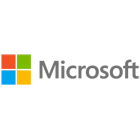Opinions expressed in this article are those of the sponsor. Search Engine Land neither confirms nor disputes any of the conclusions presented below.
Don’t miss out on the most unpredictable holiday season yet
5 advertising tips to engage online shoppers from Black Friday through Cyber Monday, and beyond.

What do advertisers need to know heading into Black Friday and Cyber Monday? What do we know about 2020 holiday trends so far? How should your brand adjust your advertising and messaging? Let’s find out.
While we’re navigating uncharted waters during this year’s holiday retail season, changes in consumer behaviors lead us to believe the retail holiday season started earlier than usual, beginning with Amazon’s Prime Day sales event in October. Consumers flocked to Prime Day deals to kick-start their holiday shopping, resulting in Amazon’s third-party sellers earning more than $3.5 billion in sales — an increase of nearly 60% from last year.
At the onset of COVID, consumers shifted their buying of necessities and other retail items online due to store closures and safety concerns. According to eMarketer, U.S. e-commerce sales will reach $794.50 billion this year, up 32.4% year-over-year (YoY). And e-commerce sales will reach 14.4% of all US retail spending this year and 19.2% by 2024. Online shopping is so strong that it will more than offset the 3.2% decline in brick-and-mortar spending this year.
Your business might be off to a strong start or have gained momentum after Prime Day, and you’re now thinking of ways to build upon that to continue your winning streak and boost your sales in the coming months. Microsoft Advertising is here to provide you with additional insights on how to advertise during a retail holiday season unlike any other. Here are five tips to set you up for advertising success leading into Black Friday and through the holidays:
1. Optimize your holiday campaigns to reach online holiday shoppers
Consumers are relying on search now more than ever. A huge spike in search growth occurred as consumers around the world have turned to search as a lifeline in the face of COVID-19 restrictions.
This, coupled with other lifestyle shifts, has led to an 18% growth in searches on tablets while desktop searches are up 8% when compared with pre-COVID-19 levels in the U.S., eMarketer reports. More people are also using search on the weekend, which has led to a 12% increase in volume. That’s two times the rate of the weekday search volume growth. Consumers are also searching during non-business hours, specifically between 5 p.m. and 5 a.m., at a rate twice that of regular business hours.
Make sure your holiday campaigns are already up and running to connect with those trends. Advertise early, and speak to, non-traditional holiday searchers and shoppers. As they say, the early advertiser gets the early shopper.
2. Get advertising ready for Black Friday and Cyber Monday
The weeks leading up to Cyber Week will see many Black Friday and Cyber Monday sales and promotions, with retailers often teasing products well before Thanksgiving week. And with good reason: Cyber Week draws the most sales and highest consumer spend of the holiday season.
The post-Thanksgiving dates of Black Friday and Cyber Monday this year are expected to deliver. Cyber Monday will once again be the biggest online spending day in U.S. history with sales of $12.89 billion, up 38.3% from last year. Black Friday is expected to be the second-biggest day of the season, with sales anticipated to increase by 39.4% to $10.2 billion.
And what categories are top of mind for shoppers this year?
- Shoppers intend to shop for gift cards, apparel, and toys and games.
- 65% plan to shop one or more sales events.
- 30% will purchase gifts for their pets this holiday, our research shows.
Utilize these insights to build your Black Friday and Cyber Monday advertising campaigns, and get them in front of shoppers before the rush.
3. Reach a high-value audience
Consumers turned to desktops at the start of the pandemic and are continuing to rely on them for their search needs. In fact, nearly 70% of e-commerce sales in Q1 2020 were on desktops.
As retail searches have increased YoY due to COVID-19 and the stay-at-home economy, certain categories saw more significant growth than others. Top purchase categories in recent months have included apparel, small electronics, and skincare. Food and grocery searches saw a 44% increase YoY, as consumers stayed home, searched for grocery and food delivery and went to restaurants much less.
With day care shifting to working parents, and remote working and online schooling becoming the new normal, consumers searched for computers and other electronics 36% more YoY. The shift to at-home entertainment and work led to the home and garden category seeing a nearly 30% increase in searches YoY, and the beauty and personal care category saw a 23% increase in searches YoY as consumers in the U.S. were forced to alter their beauty routines due to COVID-19 closing salons and spas.
Advertisers can reach a high-value audience on the Microsoft Search Network as:
- Users are 97% more likely to be in the top 10% of income than the average internet searcher.
- Unique searchers spend 25% more online than the average internet searcher.
With these category and consumer shifts, think about how your business or service can adapt to meet new consumer behaviors and how you can subsequently reach them authentically where they are, on search.
4. Stand out from the online crowd
With the growth in e-commerce sales and sellers, advertisers will need a way to stand out from the thousands of ads sure to be vying for the attention of online shoppers. Use eye-catching ad customizers to tease your upcoming sales and enhance your text ads.
Microsoft’s Search Network can help you reach consumers planning to purchase, so be sure to target those audiences by applying audience targeting bid modifiers to your holiday ads and shopping campaigns.
Product recommendations for December:
- Curbside pickup badge for Local Inventory Ads
- Merchant Promotions
- Dynamic Remarketing and standard Remarketing
- In-market Audiences
- Dynamic Search Ads and Responsive Search Ads
- Countdown customizers
- Callout extensions
Lastly, leverage the seasonal best practice of using Shared Budgets, monitoring bids and budgets to ensure you are competitive during the final stretch of the holiday season.
5. Be like Bose – all in for holiday e-commerce
Today, Bose is one of the leading audio companies, with products ranging from wireless sport earbuds, portable speakers, smart speakers, noise-canceling headphones and other audio equipment. In an increasingly competitive market during the 2019 holiday season, Bose needed to keep their products and brand top of mind while also driving conversions. To meet these objectives, Bose agency MediaCom leveraged Microsoft Advertising to promote sales and offers, reinforce their brand message and deliver enticing calls to action.
MediaCom built more than 50 remarketing audience lists to target previous website visitors with highly relevant offers and messaging. To expand their audience, they leveraged curated lists of in-market searchers through In-market Audiences, and used Similar Audiences to target shoppers who resembled current Bose customers.
Their efforts paid off. Bose enjoyed a 69% click-through rate (CTR) increase on their paid search advertising from Black Friday to Cyber Monday YoY. Additionally, In-market Audiences delivered a 28% higher CTR than non-audience visitors, as well as a 21% higher conversion rate. In fact, 47% of all Bose’s site visits can be attributed to using the three audience targeting features.
Read the full Bose holiday paid search story today.
Final holiday campaign tip
Remember: Search is where consumers start their purchase journey. In fact, 57% of consumers turn to search when they don’t have a brand in mind, and 91% of searches on the Microsoft Search Network were non-branded in the 2019 holiday season. Make sure your messaging aligns with key holiday shopping phases and customer journey touch points.
If this year is anything like last, after December 25, 68% of consumers plan to keep shopping for gifts and product exchanges. That’s why your campaign should run before Cyber Week and extend throughout the entire holiday season.
Plan your digital holiday advertising campaign around shopping trends to improve brand consideration and influence consumer decision-making whether they’re researching products or ready to buy. As advertising gears up as we head into Black Friday and Cyber Monday, make sure your brand is ready.
Advertising resources for the 2020 holiday season
Get actionable data and best practices from Microsoft Advertising insights to help make decisions and grow your business this holiday season, check our festive holiday retail content and resources, or download the Holiday 2020 Insights e-book complete with valuable trends, tips, key dates and best practices to help you navigate this retail holiday season.
Related stories
New on Search Engine Land
